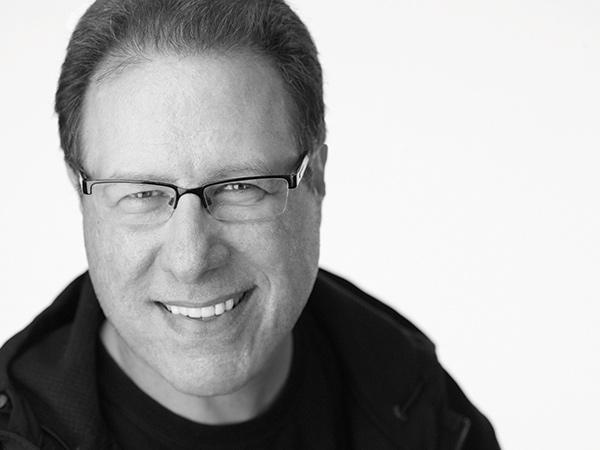Ask a Pro: Professional Photographer and Photoshop Expert Scott Kelby Answers Your Questions

Q: A picture in a computer hard drive is sent to a printer for printing via a USB cable. The same picture from the same computer from the same hard drive is sent to the same printer via Wi-Fi. Will both prints be of the same quality or will there be some minor unnoticeable differences?
Victor Palacios
A. Not that you could ever see with the naked eye. I know what you’re thinking: the Wi-Fi version has to be compressed to travel via the Internet, but the file is already compressed as a JPEG. When you send your images to be printed by a lab, like Bay Photo or Mpix, you’re sending the images via their web page—over the Internet and over Wi-Fi. Yet the prints look stunning (provided the images looked stunning to begin with). If there is a difference (and I don’t think for all practical purposes there is), you would not be able to see the difference with the naked eye. I think you might be overthinking this one just a bit. ;-)
Q. Why have camera manufacturers stopped putting manuals in their packages? If you’re out in the field shooting and have a problem, you have to go home, get on your computer using the software to see what to do, then go back out to that location and hope not much has changed.
James White
A. Two reasons: the printing and shipping costs a printed manual would add, and most folks don’t read them anyway. Since all the manufacturers still make manuals, I recommend googling your make and model, then downloading the PDF of the manual to your phone. Now you will always have the manual with you, plus it’s searchable. You won’t miss that printed manual one lick.
Q. When using a flash, why is the First Curtain Sync the default? What is wrong with leaving the setting at Second Curtain Sync? This is the most realistic setting for night photography of a moving object with lights. Why is this the wrong setting for all other times?
Al Kessler
A. I’m with you on this one, Al. I think it should be the default setting. Now, if we could just convince the flash manufacturers of that.
Q. What would your recommendation be for backing up and enjoying photos while traveling? I shoot in Raw, use Lightroom to organize and edit, am willing to travel with an iPad but not a laptop, and I will not always have reliable Internet available. I have thought about shooting in both Raw and JPEG and putting the JPEGs on my iPad so they can be enjoyed before we get home but I do want to back those Raw files up as well.
Melinda Twomey
A. I like your idea about putting the JPEGs on your iPad, so you can enjoy the images while still on your trip. However, I would recommend a different storage device for your Raw photos, something like the WD My Passport Wireless SSD, which has a built-in SD card reader. That device is also super fast, you can connect a USB card reader, and you don’t need a computer to use it—one button backs up your entire card. At $229 for the 250GB model, it’s not cheap, but you’ll sleep better knowing your Raw files are safe, and you can use it for more than just one trip. Plus, this two-location thing will work nicely, because you’ll have your originals on the My Passport and a backup with your JPEGs on your iPad.
Q. When I’m saving some of my photos as JPEGs, why do some end up as .THM, .CTG, and .XMP? Then when I try to open them, it says not recognized. It also happens when I save them to PS. I have no problem saving to PSD.
James White
A. It sounds like you’re using Windows XP and you’re seeing auxiliary files that accompany your image file and are not designed to be opened by you. For example, THM is a thumbnail used by the operating system. CTG is a file used by your camera itself and it got transferred when you imported your images. No harm done, but you can’t open those files. The XMP file is generated from your Raw file and it includes a list of any changes you made to the Raw file in Camera Raw inside of Photoshop. It’s a Text file, and while you don’t need to open it, it does contain the changes you made to your original Raw file, so you don’t want to throw it away. If you chose JPEG when you saved your file, you’ll find the JPEG file in there somewhere, too, so you can ignore those other files.
Q. I recently purchased a Sigma 70-200mm lens for my Nikon D7100. I have begun to develop toned forearms like Popeye as it has some weight to it but I do find it a bit much to haul around an ice rink. I have also purchased a monopod as most of my shooting is of ice hockey games. I like to mix in portrait orientation shots during the games so I’m looking for suggestions on a ball head that allows a quick switch from portrait to landscape while providing a solid connection.
Tyler Barnett
A. First, look at switching to the Nikkor 70-200mm f/4, rather than the Sigma f/2.8, because it’s literally 40% lighter (and around the same price). You will still get the reach, but without all the weight. As far as quickly switching to portrait, your Sigma 70-200mm (and the Nikkor) has a collar that goes around the barrel so you can connect your camera to the monopod, via the lens. The black knob on the side of that collar is for quickly rotating your camera from landscape to portrait mode in two seconds flat. So, no need to buy a ball head. You wouldn’t be happy with how hard it is to go full portrait on most ball heads anyway, especially during game action, as it would just take too long.
Scott Kelby is a photographer, Photoshop Guy, award-winning author of more than 50 books, and CEO of KelbyOne, an online education community dedicated to helping photographers take the kinds of images they’ve always dreamed of. You can learn more about Scott at his daily blog (scottkelby.com), or follow him on Twitter: @scottkelby.
















































